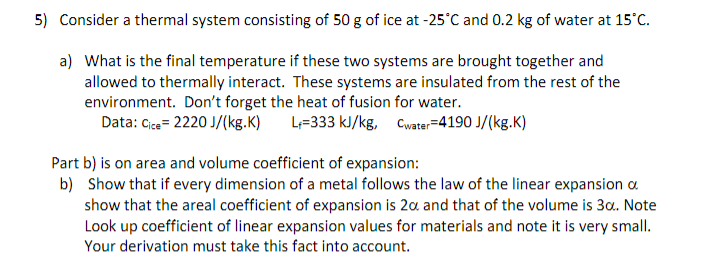5) Consider a thermal system consisting of 50 g of ice at -25°C and 0.2 kg of water at 15°C. a) What is the final temperature if these two systems are brought together and allowed to thermally interact. These systems are insulated from the rest of the environment. Don't forget the heat of fusion for water. Data: Cice=2220 J/(kg.K) L=333 kJ/kg, Cwater=4190 J/(kg.K) Part b) is on area and volume coefficient of expansion: b) Show that if every dimension of a metal follows the law of the linear expansion a show that the areal coefficient of expansion is 20 and that of the volume is 3c. Note Look up coefficient of linear expansion values for materials and note it is very small. Your derivation must take this fact into account.
Energy transfer
The flow of energy from one region to another region is referred to as energy transfer. Since energy is quantitative; it must be transferred to a body or a material to work or to heat the system.
Molar Specific Heat
Heat capacity is the amount of heat energy absorbed or released by a chemical substance per the change in temperature of that substance. The change in heat is also called enthalpy. The SI unit of heat capacity is Joules per Kelvin, which is (J K-1)
Thermal Properties of Matter
Thermal energy is described as one of the form of heat energy which flows from one body of higher temperature to the other with the lower temperature when these two bodies are placed in contact to each other. Heat is described as the form of energy which is transferred between the two systems or in between the systems and their surrounding by the virtue of difference in temperature. Calorimetry is that branch of science which helps in measuring the changes which are taking place in the heat energy of a given body.

Trending now
This is a popular solution!
Step by step
Solved in 4 steps with 4 images









